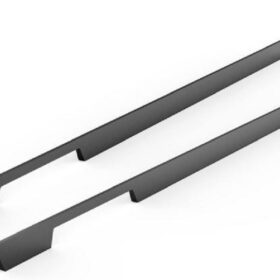The Environmental Impact of Modern Kitchen Cabinet Pulls
The Environmental Impact of Modern Kitchen Cabinet Pulls: A Deeper Dive
Introduction
Modern kitchen cabinet pulls, often overlooked as mere aesthetic embellishments, have a significant environmental footprint that warrants exploration. This article delves into the multifaceted environmental implications of these seemingly innocuous fixtures, from material sourcing to manufacturing processes and disposal practices.
Material Use and Extraction
Material selection for kitchen cabinet pulls plays a pivotal role in their environmental impact. Metals, such as stainless steel, brass, and aluminum, are commonly used, each with varying degrees of resource consumption and environmental degradation. Mining and extraction processes for these metals often involve considerable energy consumption, air and water pollution, and disruption of natural habitats.
Manufacturing Processes
The manufacturing process of kitchen cabinet pulls involves energy-intensive operations such as casting, forging, and finishing. These processes contribute to greenhouse gas emissions, air pollution, and water consumption. The use of chemical solvents and finishes can further exacerbate the environmental impact, releasing harmful substances into the environment.
Energy Efficiency
The environmental impact of kitchen cabinet pulls also extends to their energy efficiency. Traditionally, cabinet pulls were made of solid metal, which has a low thermal conductivity. This led to heat loss through the handles, reducing the energy efficiency of the kitchen space. However, modern cabinet pulls often utilize materials with higher thermal conductivity, such as hollow steel tubes or wooden inserts, which minimize heat loss and improve energy efficiency.
Durability and End-of-Life Impact
The durability of kitchen cabinet pulls directly affects their environmental impact. Durable pulls withstand frequent use and minimize the need for replacements, reducing resource consumption and waste. However, improper disposal of outdated pulls can lead to further environmental degradation. Landfills may accumulate these non-biodegradable materials, while incineration releases harmful gases into the atmosphere.
Embracing Sustainable Practices
Mitigating the environmental impact of kitchen cabinet pulls requires embracing sustainable practices. Manufacturers should prioritize the use of recycled materials and low-carbon manufacturing processes. Consumers can make informed choices by opting for pulls made from sustainable materials with high durability and energy efficiency. Proper disposal practices, such as recycling or donating used pulls, are crucial to reduce waste and promote circularity.
The environmental impact of modern kitchen cabinet pulls is a complex issue that encompasses various aspects, from material sourcing to manufacturing processes and disposal practices. By understanding the multifaceted implications, we can make conscious choices that minimize our ecological footprint and promote sustainability in our homes. Embracing sustainable materials, efficient manufacturing, durability, and responsible disposal ensures that kitchen cabinet pulls enhance both the aesthetics and the environmental integrity of our living spaces.
-
2025-12-16Custom Cabinet Pulls: The Signature of Personal Design with KRC®
-
2025-12-16Popular Kitchen Cabinet Handles: Defining Style Through Detail with KRC®
-
2025-12-16Aluminium Cabinet Handle: Where Lightweight Strength Meets Modern Design Excellence
-
2025-12-16Kitchen Cabinet Edge Pulls: The Defining Detail for Modern Ergonomics and Style
-
2024-11-29Top Trends in Modern Kitchen Cabinet Pulls for 2024
-
2024-11-28The Ultimate Guide to Modern Kitchen Cabinet Pulls- Materials, Styles, and Tips
-
2024-11-27Elevate Your Kitchen Design with These Must-Have Modern Cabinet Pulls
-
2024-11-26Sleek and Stylish- The Best Modern Kitchen Cabinet Pulls for a Contemporary Look










